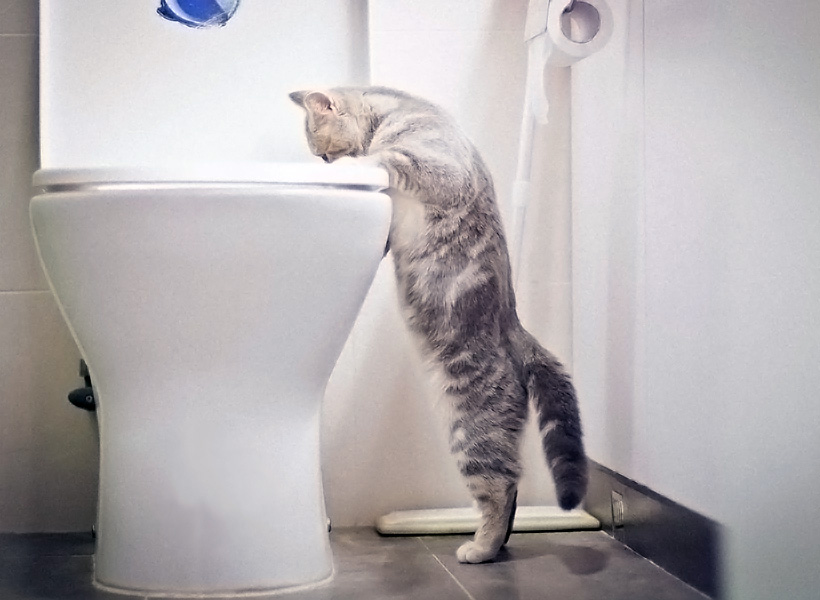Potential Issues of Flushing Cat Poop Down Your Toilet - Safeguard Your Plumbing
Potential Issues of Flushing Cat Poop Down Your Toilet - Safeguard Your Plumbing
Blog Article
Just how do you actually feel with regards to Don’t flush cat feces down the toilet?

Intro
As cat proprietors, it's vital to be mindful of exactly how we get rid of our feline buddies' waste. While it may appear practical to flush feline poop down the toilet, this practice can have harmful repercussions for both the environment and human health.
Alternatives to Flushing
The good news is, there are much safer and extra responsible means to get rid of cat poop. Take into consideration the adhering to alternatives:
1. Scoop and Dispose in Trash
The most usual technique of throwing away cat poop is to scoop it right into an eco-friendly bag and toss it in the trash. Make sure to make use of a committed trash inside story and get rid of the waste promptly.
2. Usage Biodegradable Litter
Go with biodegradable cat trash made from products such as corn or wheat. These trashes are eco-friendly and can be safely disposed of in the trash.
3. Bury in the Yard
If you have a yard, think about hiding pet cat waste in a marked area away from vegetable yards and water resources. Make sure to dig deep sufficient to stop contamination of groundwater.
4. Mount a Pet Waste Disposal System
Buy a pet garbage disposal system especially created for feline waste. These systems utilize enzymes to break down the waste, reducing smell and ecological effect.
Health and wellness Risks
In addition to environmental worries, purging feline waste can also pose health and wellness dangers to humans. Feline feces might have Toxoplasma gondii, a parasite that can trigger toxoplasmosis-- a possibly serious disease, especially for expectant women and individuals with damaged immune systems.
Ecological Impact
Flushing feline poop presents unsafe pathogens and parasites right into the water supply, posing a substantial risk to water ecosystems. These impurities can negatively influence marine life and concession water high quality.
Conclusion
Responsible pet dog possession expands beyond offering food and shelter-- it likewise involves correct waste monitoring. By refraining from purging feline poop down the commode and going with alternative disposal approaches, we can decrease our ecological impact and safeguard human health and wellness.
CAN I FLUSH MY CAT'S POOP DOWN THE TOILET?
Always avoid flushing cat poop down the drain because not only could it potentially contain harmful parasites called toxoplasmosis, the litter could sit in your line and lead to a clog.
Plenty of waste gets flushed down your toilet every day, so what harm could a little cat poop and cat litter do? The answer is a lot, which is why you never want to send it down your drains.
Can I Flush My Cat's Poop Down The Toilet?One of the biggest problems with flushing your cat’s presents is the harmful parasites in your feline’s stool called toxoplasmosis. Extremely dangerous for humans, especially pregnant women and people who are immunocompromised, these parasites can cause a multitude of problems for unborn babies and even cause death or miscarriage if the infection happens early. That’s why you should always avoid touching cat poop. Also, water systems are not equipped to handle toxoplasmosis and are unable to destroy the parasite before it’s sent back into the environment, potentially jeopardizing the health of local area wildlife, specifically marine life.
Flushing cat poop could also lead to a future drain clog. Try as you may to eliminate any litter from it, there will always still be some stuck on there – and even if it says flushable on the label, it’s not! Cat litter is made up of bentonite clay, which has the tendency to harden when wet, creating a thick, almost cement-like quality. Cat litter that ends up down the drain can expand from the moisture in the pipes and then harden, blocking any wastewater. If you have a septic tank or a cesspool, it cannot handle cat litter either, no matter what kind. If it solidifies in the tank, in any of the system’s major parts like the inlet baffle, it’ll create some expensive problems.
The best way to dispose of cat poop safely is to scoop it into a bag and throw it into the trash – and ways of dealing with the smell include adding baking soda and replacing the box more.
Now that we’ve explained the potential harm that flushing cat poop can cause to you and your drains, you might be wondering the best way of dealing with it. Unfortunately, it’s the old-fashioned way of scooping it into a bag and then placing it into a trash can. They also make pet-proof trash cans that lock in the smell, so that you don’t have to always immediately take it out. If you’re tired of smelling the litter box after even just one use from your feline, there’s things you can do to help combat that smell. Adding baking soda to the litter will reduce smells, but just don’t add too much or your cat will no longer want to use the box. You could also replace the box more frequently, at least once a year, as those smells can just seep inside the scratch marks. Lastly, try changing to a new litter formula – some are better with smells than others.

As an avid reader on How to Dispose of Cat Poop and Litter Without Plastic Bags, I think sharing that piece of content was essential. If you liked our article please do not forget to share it. Many thanks for your time. Don't forget to pay a visit to our blog back soon.
Go Deal Report this page